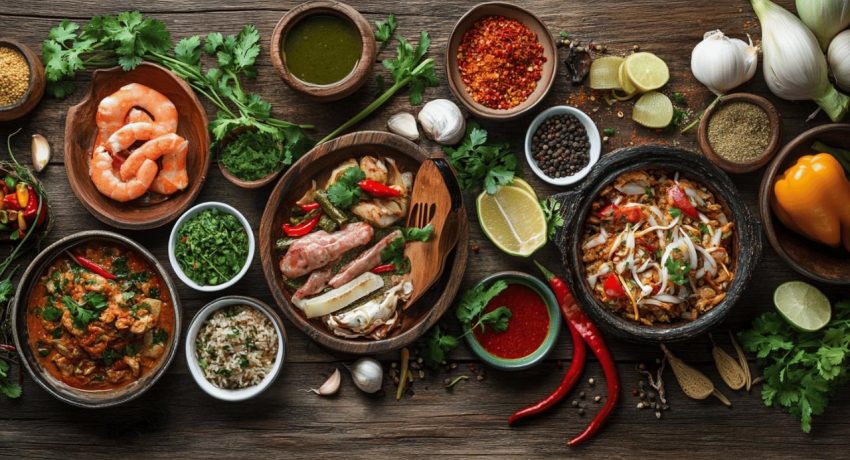Embarking on a travel adventure opens doors to the most authentic cultural experiences, with food often serving as the key that unlocks local traditions and stories. When you explore different destinations, tasting traditional dishes becomes an essential part of your journey, creating memories that last long after your return home. The culinary landscape of a place can reveal centuries of history, cultural exchange, and local innovation that simple sightseeing might miss.
Exploring global cuisine through travel
Food culture goes far beyond mere sustenance; it represents the heart and soul of communities worldwide. When travellers immerse themselves in local food traditions, they gain insights into a region’s identity that no guidebook could fully convey. The cultural connection formed through sharing a meal transcends language barriers, creating bonds between visitors and locals that might otherwise be impossible. According to travel experts at https://www.ameropaviaggi.it/, the changing landscape of must-try dishes in places like Benin demonstrates how culinary heritage evolves while maintaining its essential character.
Why food is the gateway to authentic cultural experiences
Experiencing food with all your senses while travelling delivers understanding that reading about dishes simply cannot match. Each bite tells stories of local ingredients, careful preparation techniques, and generations of knowledge passed down through families. Unlike mass-produced meals, traditional cuisine reveals the resourcefulness and creativity of people working with what their environment provides. Consider how in Ladakh, the harsh landscape and climate directly influence food preparations, with inhabitants developing sophisticated preservation methods for the winter months when fresh food becomes scarce.
Sharing meals becomes a gesture of friendship that transcends language barriers. When locals invite you to their table, they’re offering more than food—they’re sharing their identity and history. This sensory experience creates travel memories far more vivid than photographs, connecting you to places through tastes and aromas that become anchored in your mind.
How local dishes reveal historical and geographical influences
Every traditional dish has a story linking it to national identity and heritage. The culinary regions of the world display fascinating evidence of how trade routes, migration patterns, and historical events have shaped what people eat. In Vietnam, for instance, the national cuisine shows clear influences from China, France, and other Southeast Asian countries—each element representing a chapter in the nation’s complex history.
Indigenous ingredients form the foundation of authentic food experiences, with traditional dishes showcasing what naturally thrives in each environment. The Arabian Peninsula’s cuisine centres around grains, meat, dairy, and dates—ingredients that reflect the region’s geography and climate. Similarly, Mongolia’s meat and dairy-heavy diet directly responds to the country’s grassy plains and the nomadic lifestyle of its people.
Iconic regional specialities worth seeking out
As you plan your travel adventures, creating a culinary bucket list enhances your journey by giving purpose to your explorations. Gastronomic tourism has grown dramatically as travellers recognise food as a primary motivation for visiting specific destinations. From street food markets to family-run establishments, the search for authentic flavours becomes an adventure in itself.
Famous dishes that define their destinations
Certain national dishes have become so emblematic that they’re instantly associated with their home countries. In Belgium, frites served with mussels represents nearly the national dish, while Belgian waffles and chocolates have achieved global fame. Greece offers saganaki and souvlaki, traditionally enjoyed with a refreshing frappe. Meanwhile, Italy’s contributions to global cuisine—pizza, pasta dishes like carbonara, and fine wines—remain among the world’s most beloved foods.
Asian countries offer equally distinctive culinary signatures. In the Philippines, adobo and sinigang serve as trademark dishes that showcase the country’s unique flavour profiles. Chinese cuisine, with its regional variations, includes globally recognised dishes like spring rolls and wonton soup. Korean food culture places such importance on kimchi that South Koreans consume approximately two million tonnes annually of this fermented vegetable dish.
Hidden gems beloved by locals but unknown to tourists
Beyond the well-known specialities lie culinary treasures that typically only locals know about. In Romania, sarmale—cabbage rolls often prepared in vegan versions during Lent—represent a Balkan staple particularly beloved in Transylvania, where they’re traditionally boiled and served with polenta. Bhutanese cuisine features distinctive dishes like Jasha Maroo and the fiery Ema Datshi, a chilli and cheese combination that reveals the unique flavour preferences of this Himalayan kingdom.
Street food often provides the most authentic taste of local culinary arts. In Egypt, taa’meya, Alexandrian liver, and hawawshi constitute popular street foods that offer genuine flavours at accessible prices. Uzbekistan’s plov may be the national dish, but locals particularly treasure samsas as convenient, flavourful snacks throughout the day. Similarly, in Oman, local specialities like Mishkak and the improvised Omani burrito represent everyday foods that tourists might easily miss without local guidance.
Food adventures often require stepping outside your comfort zone, but the rewards can be remarkable. Trying unfamiliar foods—even those that might initially seem unappealing—can lead to unexpected joys and deeper cultural understanding. Whether you’re sampling stinky tofu in Taiwan or wood worms in the Philippines, these culinary courage tests often become the most memorable parts of your journey.








